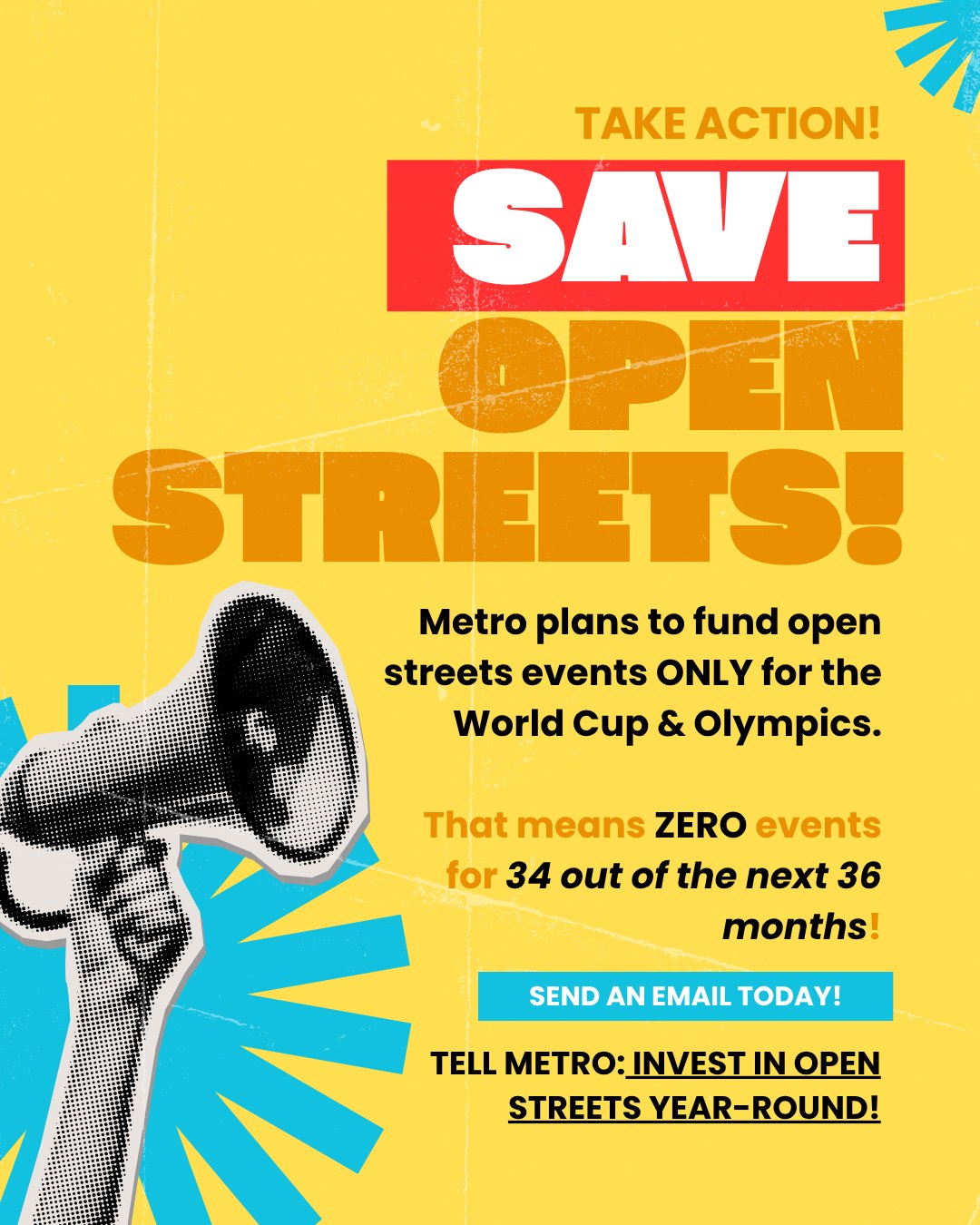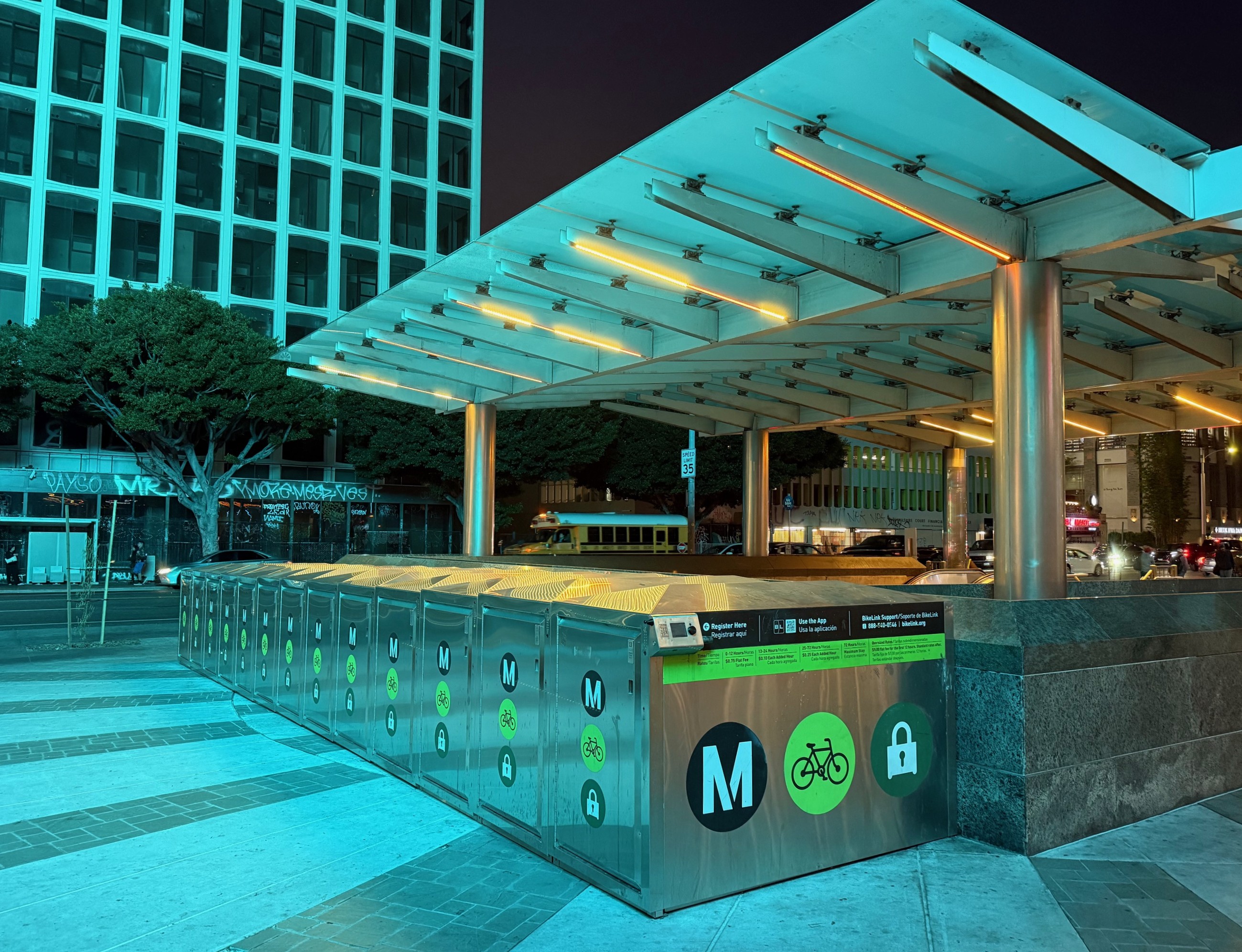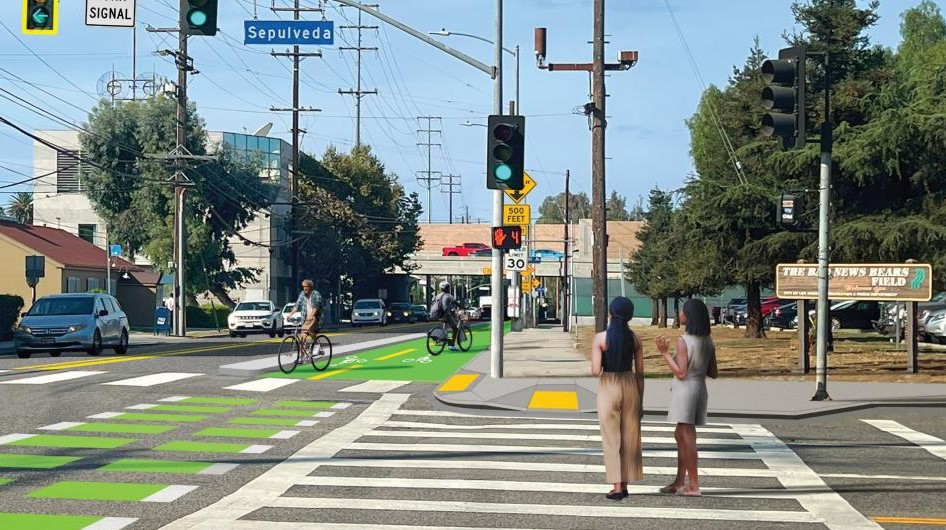![Metro's Transit Service Policy Update is summarized in this presentation [PDF]](https://lede-admin.la.streetsblog.org/wp-content/uploads/sites/50/2015/10/TransitServicePolicy.jpg?w=710)
The Metro Board of Directors held its monthly committee meetings this week, in advance of next Thursday's board meeting. Below are a handful of news bits gleaned from this week's committee meetings. Final decisions still need to be approved by the full board next week.
Frequent Bus Service Network
Metro's System Safety, Security and Operations Committee approved a new 81-page "2016 Transit Service Policy" document [PDF]. The changes are summarized in this presentation [PDF]. The document primarily lays the groundwork for implementing the not-yet-well-defined Frequent Bus Network, also known as the Strategic Bus Network Plan (SBNP.) SBLA analyzed the draft network proposal in this earlier article.
There are two main policy changes in the new Transit Service Policy. Both were recommended in Metro's March 2015 American Public Transportation Association review:
- Increase Load Factor: Load factor measures how crowded buses are. Currently Metro has a single load factor for all bus service; buses (at least as scheduled/planned at peak) hold 1.3 times their seated capacity. That means that generally 23 percent of riders are expected to stand at peak hours. The agency is adopting a new standard that it characterizes as "wait a long time: get to sit down." It is a more complex standard that takes into account frequency of service. Peak service load factors increase to 1.4, meaning 29 percent of peak hour riders can expect to stand. This is a somewhat delicate balance to strike. Transit expert Jarrett Walker emphasizes that maintaining a low peak load factor is costly. On the other hand, overcrowded buses can become so full that they pass by waiting riders.
- Eliminate Bus Stops: Metro reports that, over the past five years, average bus speeds have declined from "12 mph to less than 10.91 mph." One low cost way to address this is to eliminate stops, especially local bus stops that are close together. See this earlier SBLA article on the benefits of bus stop thinning.
As this earlier SBLA article outlines, many questions remain regarding the SBNP, especially regarding canceling lines that may be picked up by municipal bus operators, including Foothill Transit and Santa Monica Big Blue Bus. The timeline specified in the presentation shows Metro detailing service changes in December, and holding hearings in February 2016, for a planned implementation in July 2016.
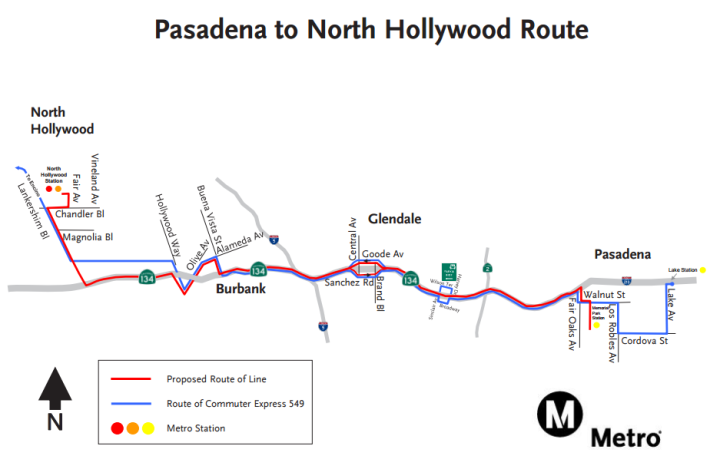
New NoHo-Pasadena Express Bus Line
Metro’s Operations Committee approved $784,000 to fund a new North Hollywood to Pasadena express bus, connecting the Orange and Red Lines with the Gold Line. The new freeway bus line will be called Line 501. It is expected to begin a 180-day pilot at the same time that the Foothill Gold Line opens in the Spring of 2016. The route roughly parallels LADOT Commuter Express line 549, which operates only on weekday peak hours. Additional details in Metro staff reports.
Metro is also studying this Pasadena-NoHo connection for a possible upgrade to high quality Bus Rapid Transit (BRT.)
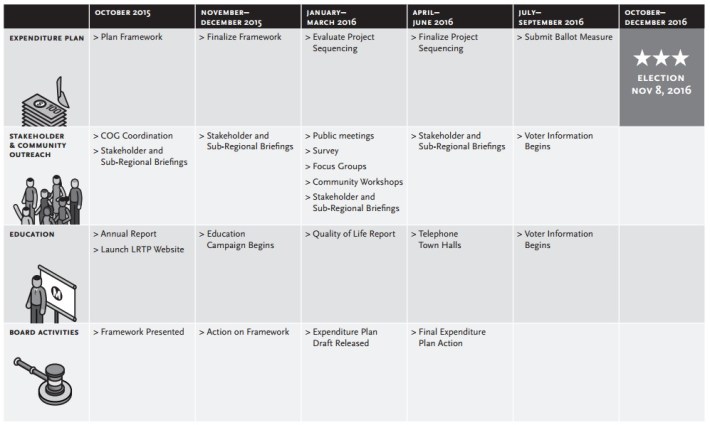
Measure R 2.1 Framework Announced
Preparations for a possible November 2016 transportation sales tax measure are underway. This week Metro committees were presented with a draft "framework" on how projects will be evaluated. The board is expected to vote on the framework at its December meeting. The staff reports still include numerous project lists that go well beyond what a new tax could fund, so sausage-making deal-cutting should begin very soon. We'll have more details on how this is shaking out in future SBLA articles.
Transit Oriented Communities Demonstration Program
Using terminology Metro CEO Phil Washington states frequently, Metro is moving from TOD to TOC - that is, from Transit Oriented Development to Transit Oriented Communities. The changes are positive but somewhat subtle. Under the leadership of Washington, and board chairs Eric Garcetti and Mark Ridley-Thomas, Metro is taking a somewhat more proactive role in developing housing and retail at its rail stations, with an emphasis on affordable housing. Metro recently updated its Joint Development Policy, and retooled its now-TOC website. Staff reports detail improved development guidelines and design review processes, and highlighted projects from Duarte to El Monte to North Hollywood.
Parking Plans Change at MacArthur Park TOD
On a related TOD, er, TOC note: Metro's excessive TOC parking predictions turned out to be inaccurate on the initial phase of a joint development project adjacent to the MacArthur Park Red Line Station. Metro's joint development included 100 free parking spaces for transit riders; a conservative estimate of $24,000 per space would place this at about $2.4 million worth of parking infrastructure. Metro staff observed the 100 spaces and found "occupancy has remained at zero percent... since it opened in summer of 2013." Metro staff observed an average of 29 cars using the 100 spaces, but determined that none of the cars were transit riders.
Metro's solution is to lease the spaces on a monthly basis to non-transit riders, generating approximately $100,000 in annual revenue (per the staff report [PDF] and presentation [PDF]). So Metro is likely to recoup that initial $2.4 million in investment in about 24 years, without even a pretense of supporting transit riders. While it is worthwhile that Metro will be charging for this un-utilized parking, perhaps it would have been better to have initially invested this money and this space in something more beneficial to the community. Maybe affordable housing instead?
Will a similar dynamic occur at other sites? Perhaps at Metro's North Hollywood TOC, saddled with $48 million in transit rider parking? Time will tell. If Metro is really stepping up to foster affordable TOC, the agency will need to step away from insisting on outdated suburban parking requirements.

